What Is Digital Marketing?
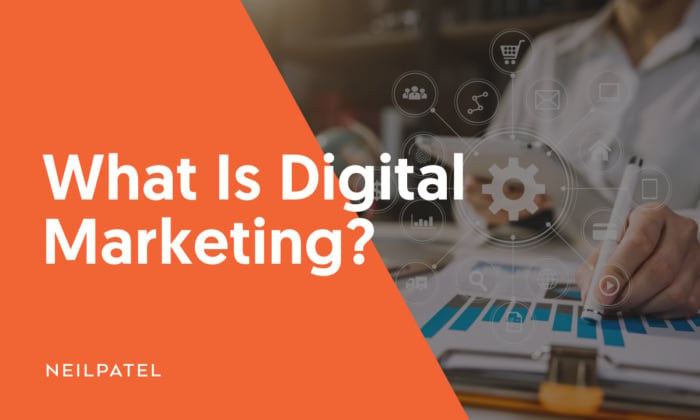
What is digital marketing, and why does it
matter? That’s precisely what I plan to discuss today. I’ll cover everything you need to know to get started with digital marketing, but first, let’s discuss why it’s so essential to your business. Sss
Today’s fast-paced digital marketing landscape is growing and evolving rapidly. This sector is projected to reach a whopping $786 billion by 2026. As such, traditional marketing strategies no longer hold the same weight they once did. More people than ever are using the internet, providing businesses with immense opportunities to connect with their audience.
Digital marketing has become more than just a trend; it’s now a requirement for businesses of all sizes to thrive in the competitive online market.
Imagine reaching a global audience with a single campaign, engaging with potential customers in real time, and driving conversions like never before. With a robust digital marketing strategy, you can!
Digital Marketing: Key Points
- Digital marketing uses digital channels to promote a product or service.
- Using digital marketing techniques and strategies helps businesses reach their target audience, engage with them, and ultimately convert them into customers.
- Examples of digital marketing include SEO, PPC, social media marketing, content marketing, and leveraging traditional offline media for advertising.
- Offline digital marketing includes out-of-home advertising, TV marketing, and radio marketing.
- Combining online and offline digital marketing is vital to any well-rounded strategy.
- Global digital advertising spending is on course to reach $835 billion by 2026.
What Is Digital Marketing?
You hear the phrase often these days, but what is digital marketing?
Simply put, it’s a method for promoting your business online using digital channels. It might be SEO, social media, email marketing, setting up a landing page or website, using mobile apps, or creating online ads to reach customers. This umbrella term also includes marketing using digital devices such as TV or radio.
Effective digital marketing gets your brand in front of an online audience and enhances visibility to increase engagement, click-throughs, and conversions.
Examples of online digital marketing include:
- Search engine optimization (SEO): optimizing a website to improve its visibility and ranking on search engines like Google.
- Pay-per-click advertising (PPC): paying for advertisements to appear on search engine results pages or social media platforms.
- Social media marketing: creating and sharing content on social media platforms like Facebook, Twitter, and Instagram to increase brand awareness and engagement.
- Content marketing: creating and sharing valuable content, such as blog posts, e-books, or videos, thus attracting and retaining a specific audience.
- Leveraging traditional offline media for advertising: using radio and TV marketing, billboard advertising, print, and in-person events.
Analysts predict global digital advertising spending will reach $835 billion by 2026, with clicks and display ads among the most dominant forms.
Then there’s offline digital marketing like:
- Out-of-home advertising: This involves using billboards, transit ads, or other types of visual media to promote your brand or product. This can be a great way to reach a broad audience and create a strong visual impression.
- TV marketing: where you promote your products through adverts, infomercials, or even demonstrations.
- Radio marketing: Trailers and commercials promoting your product to listeners.
Another report by Expert Market Research shows the US digital marketing sector reached $363 billion in 2023.
You can do digital marketing online and offline, and using a combination is vital to any well-rounded strategy. These techniques and strategies help companies to effectively reach their desired audience, actively engage with them, and successfully convert them into loyal customers.
Why Digital Marketing Matters
My clients spent hundreds of millions of dollars on billboard advertising not long ago, but times have changed.
Today, most companies have moved to online (digital) marketing. That’s because Google and Facebook generate more revenue than traditional media companies. Then, there’s the use of mobile devices.
You can go just about anywhere these days. Whether you are at the grocery store, a restaurant, or even a movie theater, they have one thing in common: you’ll see plenty of people with their eyes practically glued to their phones.
Phone advertisements are like mini billboards, broadcasting adverts whenever we look something up.
Mobile usage is massive, and the figures are only heading upward.
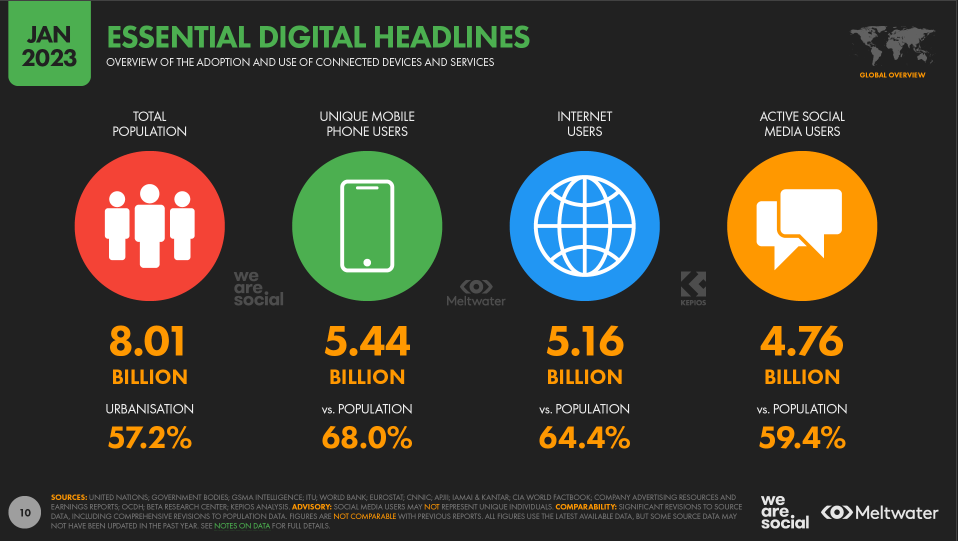
There are 5.44 billion mobile phone users worldwide, 5.16 billion internet users, and 4.76 billion social media users.
Moreover, internet-connected devices continue to rise while print advertising declines.
The stats say it all.
Digital marketing is essential to get your product or services in front of customers; your customers are online, and you must be there, too.
And don’t go thinking digital marketing is just for the big corps.
Even the smallest local stores can benefit from some form of online advertising. According to a survey by Digital.com, 43 percent of people conduct a local search on their smartphone before visiting a physical store.
All of this, and I haven’t even gotten to some of the best things about digital marketing. It:
- Provides access to more data: You get access to vital analytics about your customers, how they navigate the buying cycle, and what they want. You can use this data to analyze what works and doesn’t and tailor your strategy accordingly.
- Helps you reach a wider audience: Digital marketing allows you to reach a wider audience than traditional marketing methods. For example, social media platforms like Facebook and Twitter have billions of active users, and advertising can help you target demographics. By 2027, social network users will reach almost six billion. So, it’s a platform you can’t ignore.
- Is cost-effective: Digital marketing is more affordable than traditional marketing methods like TV or print advertising. With digital marketing, you can create highly targeted campaigns with a better return on investment (ROI) for your business and reach your goals.
- Provides greater engagement: You can use email, social media, and content marketing tactics to keep your audience engaged and interested in your products and services. For instance, creating a blog with valuable content on your website can attract visitors and make them more likely to buy. According to HubSpot, 56 percent of people who read a blog post go on to purchase.
- Offers measurable results: You can use tools like Ubersuggest and Google Analytics to analyze web traffic, conversion rates, and other metrics to see your campaigns’ performance.
- Helps your business stay competitive: Your competitors are likely using digital marketing to reach their target audience, so you don’t want to fall behind. For instance, email marketing offers the highest ROI compared with other digital marketing strategies.
Using digital marketing tactics, you can improve your visibility, engage with your target audience, and drive revenue for your business.
Online Digital Marketing Overview
The two main pillars of digital marketing are online and offline. I’ll discuss both, with the main focus being online marketing. Let’s start with the main categories of online marketing before breaking each section down:
- Search engine optimization (SEO)
- Search engine marketing (SEM)
- Content marketing
- Social Media Marketing (SMM)
- Affiliate marketing
- Email marketing
Search Engine Optimization (SEO)
Search engine optimization means optimizing your website and content to perform better in the search engines. A well-structured SEO strategy involves:
- Keyword research
- Creating content quality
- Enhancing user experience through increasing page speed
- Monitoring analytics to see what’s working
It boosts your visibility and page rank, getting more visitors to your pages, which (hopefully) translates into more conversions.
SEO is an organic approach that attracts visitors actively looking for your product/service, but it takes time to work. It’s likely to be a few months before you see results, but patience and consistency can yield fantastic results.
Here’s a handful of examples of what some solid SEO strategy can achieve:
- CNN grew its search audience by 91 percent.
- DesktopReady increased users by 409 percent.
- Verint increased clicks from organic searches by 32 percent year-on-year.
Search Engine Marketing (SEM)
The digital advertising industry is expected to reach almost 272 billion by the end of 2023, just in the U.S. Search engine marketing refers to promoting a website through paid advertising. The most popular form of SEM is pay-per-click advertising, like the types of ads you see on Google, Facebook, and other social media sites.
With SEM, marketers select their target keywords and then place a bid on them. The PPC ads of the highest bidder appear in the search results when a searcher enters a matching keyword. Advertisers only pay when someone clicks.
The main advantage of search engine marketing is that you’ll get faster results from your advertising than SEO. However, it can be costly, especially if you don’t have a well-thought-out strategy behind it.
Skyscanner is one brand using PPC effectively. Its ads take people directly to its landing page, which they’ve designed to match search intent.
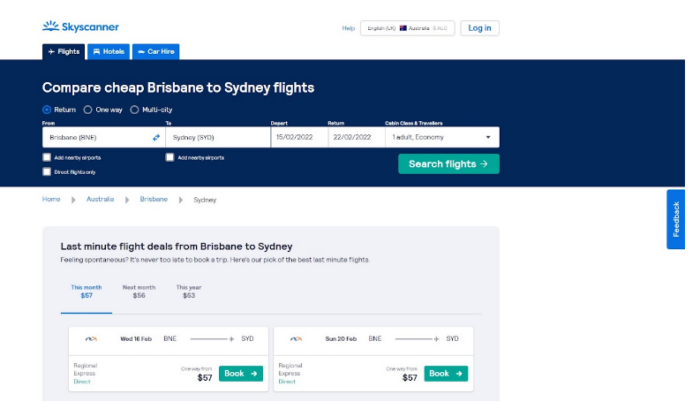
Skyscanner also works with its media agency partner and internal data science team to monitor the success of campaigns and ensure they’re on track.
Another brand utilizing PPC well is ProteinWorks, which ranks top in paid search results on Google:
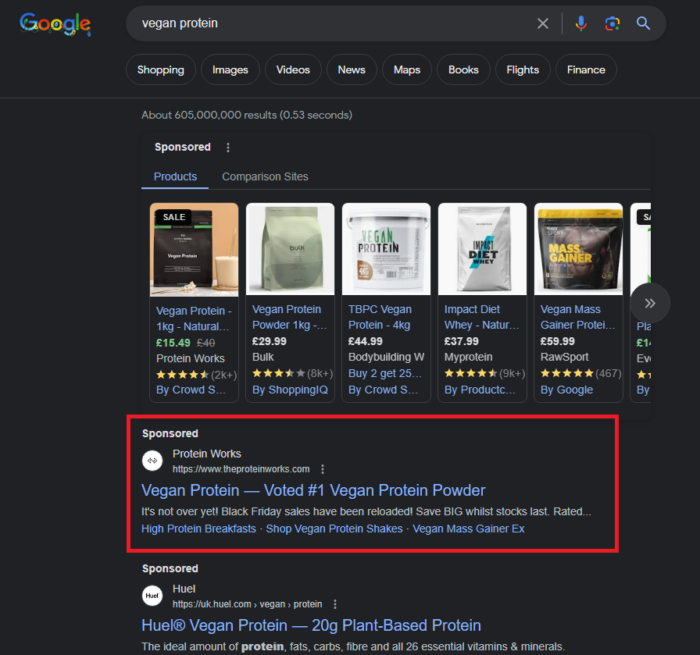
Content Marketing
Seth Godin once said, “Marketing is no longer about the stuff that you make, but the stories you tell.”
That’s content marketing in a nutshell.
By regularly creating high-quality, valuable content, you can build trust, establish authority, and increase engagement. Your content can come in many forms, like:
- blog posts
- long-form articles
- video and email marketing
- infographics
Rather than taking the direct sales approach, content marketing educates, entertains, or addresses consumers’ pain points. Over time, this develops a connection between a brand and its audience, making them more likely to become buyers.
Content marketing builds trust, increases engagement, and helps SEO, thanks to the regular flow of fresh content. In a recent survey by the Content Marketing Institute, 75 percent of respondents said content marketing was pivotal to building brand trust and awareness.
On the downside, content marketing is time-consuming and a long-term strategy.
HubSpot is an excellent example of content marketing. It uses a blend of blogs, newsletters, videos, and podcasts to connect with its audience. It also provides free templates, e-books, workbooks, and free courses designed to get people coming back for more.
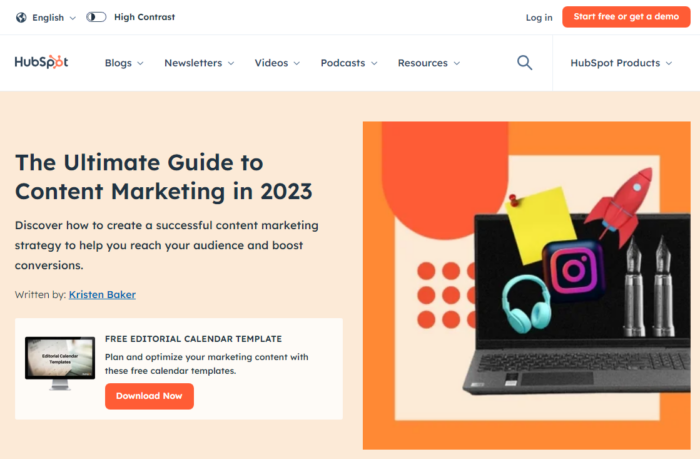
Social Media Marketing (SMM)
This digital marketing strategy uses social media platforms to reach your target audience, create brand awareness, and promote products or services. Regularly publishing content can drive website traffic, build customer relationships, and enhance sales.
Social media marketing starts with selecting the right platform for your audience, creating content that resonates with them, and engaging with prospects by responding to comments and sharing helpful content.
You can also use paid advertising on social media to better target users depending on their demographics, interests, and behaviors.
The main advantage of social media marketing is the vast audience base, which helps to put your brand in front of a global audience. Also, you can use the data you collect for more precise, personalized targeting.
However, you may find it hard to stand out on the platform because of the sheer amount of content on there, and you’re dependent on a third-party platform and any changes in its algorithms or policies.
Wendy’s is one brand that stands out on social media. The fast food chain isn’t scared to poke fun at its competitors, leading to some memorable posts on X (formerly Twitter).
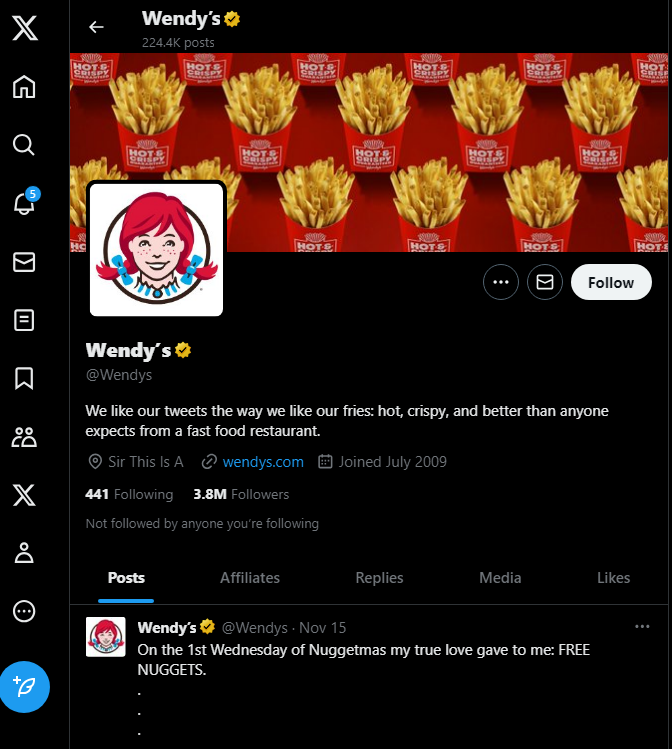
Affiliate Marketing
If you want to reach a wider audience, consider affiliate marketing.
When you use this digital marketing tactic, you allow others to promote your products via a unique tracking link in return for a commission when they make a sale.
Affiliate marketers promote their links via mailing lists, website content, YouTube, and any other online marketing platforms they have. When a buyer clicks on an affiliate link and completes a purchase, the marketer earns some money.
Affiliate marketing gives your products/services a much wider reach and is cost-effective. On the negative side, affiliate schemes are challenging to manage, especially if you have large numbers of affiliates and there’s a fraud risk.
One of the best examples of affiliate marketing is Shopify. It’s managed to attract many affiliates, and with commissions paying up to $2,000 a time, it’s easy to see why.
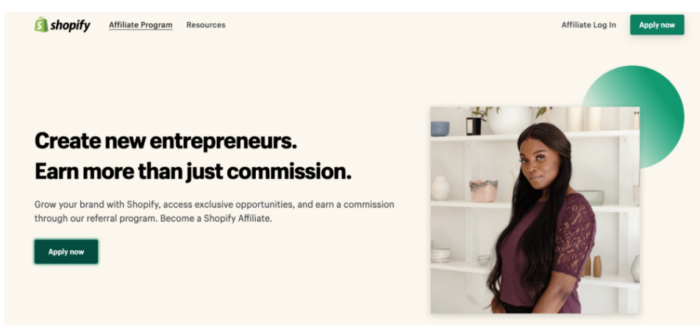
Email Marketing
This is one of the most popular and effective forms of digital marketing.
It works by encouraging users to sign up for mailing lists through lead magnets, websites, or opt-in forms. Buyers might also sign up for a newsletter when buying a product or service.
When a business has built up a large list of email addresses, it can start sending targeted emails and segmenting (sending specific emails to smaller groups) for better results.
Email marketing allows better targeting and personalization and gives you measurable metrics to work with.
The biggest downside of email marketing is legal compliance and ensuring that your use of email complies with the CAN-SPAM Act and General Data Protection Regulation (GDPR).
Starbucks is just one company embracing email marketing. It uses animation for additional engagement and exclusivity to make its membership program more appealing.
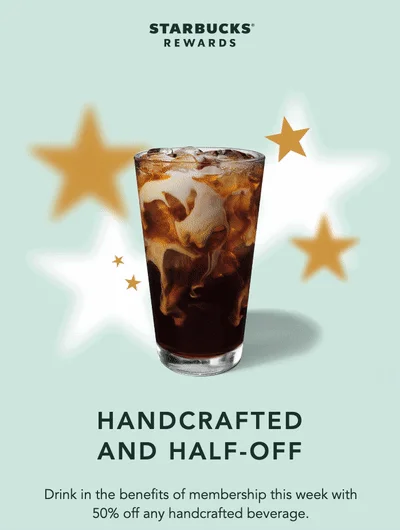
Offline Digital Marketing Overview
As the name suggests, offline digital marketing is performed away from the internet. It still uses digital devices like cell phones, radio, and TV.
Modern marketers can leverage offline digital marketing in tandem with their online channels. Some of the most common strategies include SMS marketing and QR codes.
SMS Marketing
Just about everyone has a cell phone these days, which explains why SMS marketing is so popular.
Did you know 90 percent of people prefer to receive texts from businesses instead of phone calls? Why? Because it’s convenient and respectful of your customers’ time. It also means you can leverage many opportunities for marketing and promotion offers.
With a 98 percent open rate, a text message is almost a guaranteed read. Consumers are keen to read them, too, with 90 percent opening texts within three minutes.
While you should get permission first, for example, by having your customers text a specific word to a phone number, several providers offer text marketing at scale.
There are several ways to leverage text message marketing:
- Special deals, coupons, and discounts are great for restaurants to get additional customers and turn walk-ins into regulars. For example, clothing brand Monsoon embraced the power of SMS marketing and boosted all online sales by 10 percent by offering discounts:
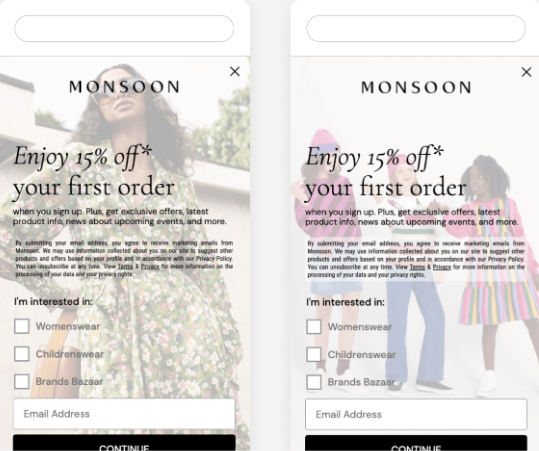
- Using text reminders as customer service can enhance your mobile marketing. For instance, many pharmacies alert customers when their prescriptions are ready for pickup.
- Another option is a loyalty program where you text participating customers special deals and giveaways.
QR Codes
QR codes are barcodes that take users to a web page or app.
This one, for example, is for the English home page of Wikipedia.
Once, you used to download a specific app to use QR codes, but now all you need is the camera on your smartphone to scan and open a site.
Brands can use QR codes to deliver ads, send users to a video, or combine with other forms of enhanced offline marketing. You can even use AI to transform QR codes into functional art like Coca-Cola did in a recent campaign:

Insurance company Beazley took things to the next level in April this year by programming over 400 drones to form a huge scannable QR code in the sky for a marketing event directing people to its website:

4 Steps to Build Your Digital Marketing Strategy
Whether you are an established business or a small start-up, wasting time and money on marketing campaigns is a common brand fear. A well-executed digital marketing strategy is needed to help you achieve your marketing objectives and grow your business.
The process can feel a bit intimidating if you’ve never developed a digital marketing strategy. Fortunately, there are only four key steps to keep in mind.
Let’s discuss each one in more detail.
1. Research and Understand Your Audience
Before diving into digital marketing strategy, let’s spend some time unpacking the concept of target audiences. This infographic from the Search Engine Journal does a great job explaining the difference between your target market, target audience, and target persona.
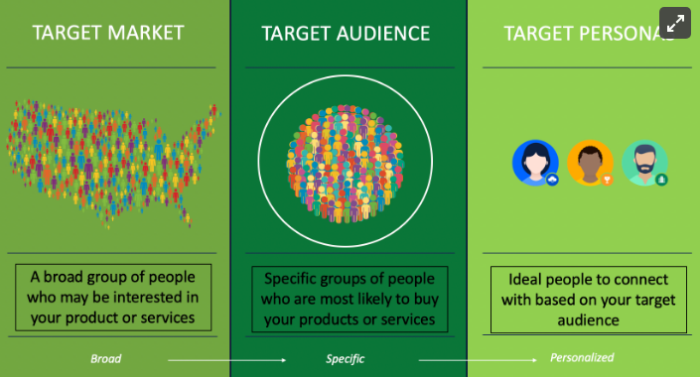
Typically, you would target audiences by specific data points, like:
- Gender
- Age
- Education
- Purchasing power
- Location
This precision allows you to spend your ad budget efficiently by marketing to the people most likely to buy your product or service.
Of course, this leads us to the most challenging aspect of targeting: properly defining your audience. Don’t get overwhelmed, though. Instead, follow these pointers to reach your ideal customers.
Start by analyzing your market. Ask yourself:
- Are you operating in a well-established market or a developing one?
- Is your industry mainstream?
- Who are your major competitors?
- Which types of content work well for them?
Having defined your market, think about the kind of customer you’re looking for.
Start with a general idea of your ideal customer, then use data points to narrow down your audience. For example, a possible target audience for your product might be men, 25 to 35 years old, living in Colorado, with a monthly income of $4,000 to $6,000.
Finally, find the most popular blogs in your industry, the e-commerce stores they shop at, and the YouTube videos they watch.
Keeping track of this info gives you insight into what they like to consume, making outreach and content creation significantly easier. Use tools like BuzzSumo or AnswerThePublic to pick up on trending content and for social listening to get content ideas for your target audience.
2. Set Digital Marketing Strategy Goals and KPIs
There’s a trend I’ve noticed when discussing possible digital marketing solutions/options: marketers often gloss over the concept of goal-setting. This is a shame because a well-defined marketing plan can empower your brand.
For example, these visuals from Moosend detail the numerous strategies you could include in your marketing plan.
Having goals ensures that your digital marketing strategy is easy to monitor and update, but you must set up your marketing plan correctly.
When the average person thinks about setting goals, they tend to be qualitative goals. For instance, improving your brand image or increasing your brand’s position within your industry.
However, there’s a problem with these types of aims, as they’re notoriously challenging to measure. Instead, it is better to focus on quantitative goals.
Here’s an example: Brand A wants to improve customer perception. Still, after spending a significant amount on advertising and promotion, it doesn’t know why they receive so much traffic or how much traffic led to conversions.
In contrast, Brand B wanted to increase conversions of its key product X by five percent over the next six months. It has established tangible milestones for each abstract goal that it can easily measure and experiment with to improve its marketing campaign.
By establishing clear and measurable goals and identifying KPIs, brands can make long-term experimentation and growth possible.
3. Create Your Digital Marketing Strategy
Now that we’ve covered the basics, it’s time to build and implement suitable digital marketing solutions that help build your brand.
That means determining which digital marketing channel to focus on.
If this step stresses you out, you’re not alone. One of the reasons this decision can feel so intimidating is the fear of investing in a channel that won’t work.
Fortunately, our framework for digital marketing strategies minimizes that risk dramatically. With small, hyper-focused campaigns, brands can track a channel’s effectiveness without spending thousands of dollars.
Are you interested in paid social media ads, for example? Set a goal, implement a small marketing push, and analyze how valuable Facebook ads are to your brand. Then, you can use that data to predict how effective future campaigns within that channel will be.
This approach allows you to collect relevant data points and develop a clear understanding of which channels resonate with your audience, enabling you to create successful marketing campaigns.
4. Continue Improving
Many brands struggle with achieving long-term growth despite collecting the right data points. Turning data into the next quarter’s marketing campaign can be frustrating due to issues such as:
- Not knowing which problems need fixing
- Not fully understanding the audience
- Too much data leads to confusion
- Limited marketing budget
Setting clear and tangible goals and tracking results can simplify the process, yet some brands need help understanding the idea of long-term growth and what it entails. Growth is not always linear; experimentation is necessary to identify successful components.
With each new expansion of your digital marketing strategy, you’ll identify parts that work and that don’t. Savvy brands understand this and commit themselves to promoting long-term business growth. For example, they’ll explore the latest social media platform, try the newest marketing channels, and so on until they see success.
The goal of a solid digital marketing strategy is to avoid stumbling upon a channel and hope for rapid growth but instead to collect valuable data and develop a long-term, sustainable plan for continued success.
The Future of Digital Marketing
New platforms, tools, and techniques continue to emerge, giving marketers even more opportunities to connect with their target audience.
From big data and blockchain to AI and augmented reality, the future of digital marketing will allow digital marketers to increase personalization and reach customers in new ways.
Artificial Intelligence
You can’t have missed the rise of Artificial Intelligence (AI), but what does it mean for digital marketing? According to Goldman Sachs, AI could increase the global GDP by almost $7 trillion.
Sounds impressive, right?
And it is. Global brands such as Amazon, Nike, and Starbucks already use AI in their marketing strategy. This technology ripples through almost every level of a business model, providing benefits to:
- Efficiency and productivity
- Enhanced customer experience
- Smarter decision making
- Cost reduction
- Innovation and competitive advantage
Tools like ChatGPT are great for outlining drafts and optimizing content with keywords, and yes, it can write text. AI can also help create videos, enhance personalization, and help segmentation.
Undoubtedly, AI is powerful enough to make your digital marketing more efficient, but it’s not without limits.
Why do I say this? Because marketing relies on emotion. You know, the type of ads that pluck at your heartstrings. Or the ones that make you want to rush out and buy something there and then. AI can’t do that. Yet.
Augmented Reality
Another technology that’s transforming digital marketing is augmented reality or AR. According to Think with Google, over a third of Gen Z will shop using AR by 2025.
Advertisers can use AR to:
- Create interactive ads, allowing consumers to interact with virtual objects, play games, or access information using AR-enabled apps.
- Provide enhanced product visualization using virtual try-ons to improve the shopping experience.
- Deliver location-based marketing leveraging GPS and AR tech to provide personalized information to users based on their location.
- Enhance brand storytelling using AR experiences that bring their products or brand to life through immersive narratives or behind-the-scenes content.
A popular way of using AR is virtual try-on apps where shoppers get to virtually try on goods and see whether they suit them before buying,
Here is an example from Valentino.
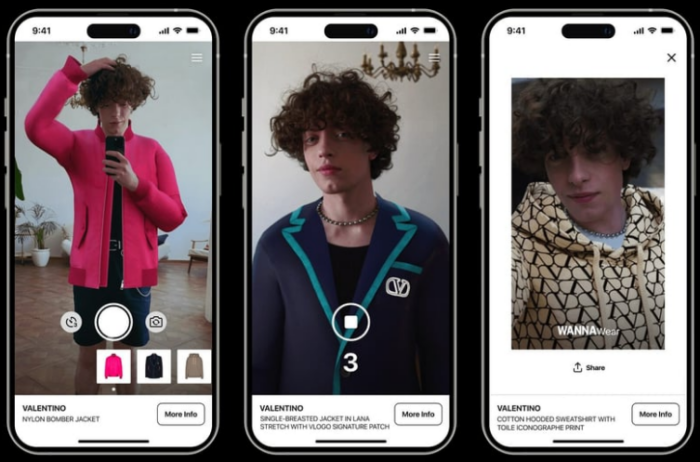
This can increase customer engagement, boost brand awareness, and potentially drive more sales.
These technologies are also giving digital marketers new metrics to measure. As Maghan McDowell, senior innovation editor at Vogue Business, explains, brands are measuring:
- How many people are using the try-on experience
- Time spent using AR
- The effect on brand affinity
- The likelihood of customers returning for the experience
AR and VR are also increasingly used on social media to enhance personalization and tailored marketing campaigns by leveraging valuable data like user behavior.
Partnering With a Digital Marketing Agency
Now that you have a firm grasp of the ins and outs of digital marketing strategies and understand what digital marketing is, it’s time to start considering working with a digital agency and exploring what they can do for your business.
If you don’t want to go it alone, a digital marketing agency can determine the right digital marketing solutions for your problems. For example, you might want to build an affordable but effective online campaign targeting large customer groups. In that instance, an agency could help you decide on the ideal social media platform and develop a campaign that would resonate with your target audience.
Here are a few more advantages to working with a digital marketing agency:
- You benefit from deeper expertise: Digital marketing agencies have expertise in specific roles or industries due to their specialization and experience with multiple clients. When hiring an agency, you gain access to a team with diverse skills and networks, allowing for more flexibility and perspectives.
- Scalability as you grow: Scaling a business can present challenges in finding the right talent and acquiring new customers. Working with a digital marketing agency can help address both of these challenges.
- A dedicated partner: Working with a marketing agency versus hiring an employee offers different dynamics. An employee understands their chain of command and likely won’t provide strategic input unless in senior management.
How to Choose The Right Digital Marketing Agency
Not sure what to look for in a digital marketing agency or which digital marketing solutions might work for you? Here are a few tips to help narrow down your choices.
- Know your goals and desired outcomes: Finding the best agency to suit your needs is easier when you know what you want to achieve.
- Look for a sizable portfolio or list of past clients: Professional digital marketing agencies are proud of who they work with and their work. Furthermore, they typically display their partnerships on their website for the world to see.
- Find experienced and specialized team members: It’s essential to ensure the agency you hire has the right team members to suit your project. Search on Google, ask for a recommendation, or look on LinkedIn.
- Seek social proof and a strong industry reputation: Social proof, like testimonials and previous client reviews, can give you deep insights into what working with a specific agency is like.
- See if you have similar core values and company culture: Working with a digital marketing agency that values the same things and operates in a similar environment is crucial. Doing so helps the agency mesh with your team.
- Look at website design: The best digital marketers know how essential a well-designed website is; if they’re not executing internal projects well, why would you expect them to deliver something better for yours?
- Ensure they aren’t making outlandish promises: The type of results an agency promises on its website strongly indicates how well it understands the industry. For example, anyone claiming to fast-track you to the number one spot on Google doesn’t know that SEO is a long-term and short-term marketing strategy. Or that it requires continuous work to maintain.
- Are they easy to contact? Navigating a website shouldn’t feel like a maze. The best digital marketing agencies make it simple for potential clients to get in touch by providing a clear call to action.
I have multiple agencies in various countries worldwide if you need digital marketing services.
Get the Most Out of Your Partnership
Once you’ve found the right digital marketing agency, you can do several things as a client to maximize your results and get the most out of your strategic partnership.
Doing the following things helps to set the stage for effective and successful collaboration through every project phase.
- Prepare your team and do your homework: It’s essential to have everyone on the same page; meet with your team and let them know the extent of your new project or partnership with plenty of time to prepare for it.
- Understand the scope, process, and timeline: Before the project starts, ensure every stakeholder agrees on the size and timeline before moving forward. But, again, this is just as much your job as it is your agency’s.
- Get ready to collaborate: The best digital marketing projects are highly collaborative. Furthermore, your input, thoughts, and ideas help move the project forward in the right direction to match your desired outcomes.
- Be ready to forfeit control: You hired the agency for its expertise. This means giving them complete control over certain aspects of the project to let them do what they do best. It’s also important to listen to what they say.
- Ask questions: If you’ve never worked with a digital marketing agency, you will see and experience many new things. If you’re unsure why the agency is suggesting something, the best thing to do is ask questions.
FAQs
Conclusion
By now, you should be fully clued up on what digital marketing is and how it can help your business thrive in this competitive landscape. Whatever your aims or budget, you can put a digital marketing plan in place and start reaching new audiences by following the steps outlined in this guide.
Remember, digital marketing is a process that requires continuous learning and optimization. Embrace existing and emerging tools to stay ahead of the curve. And keep innovating to improve lead generation opportunities and create meaningful customer experiences.